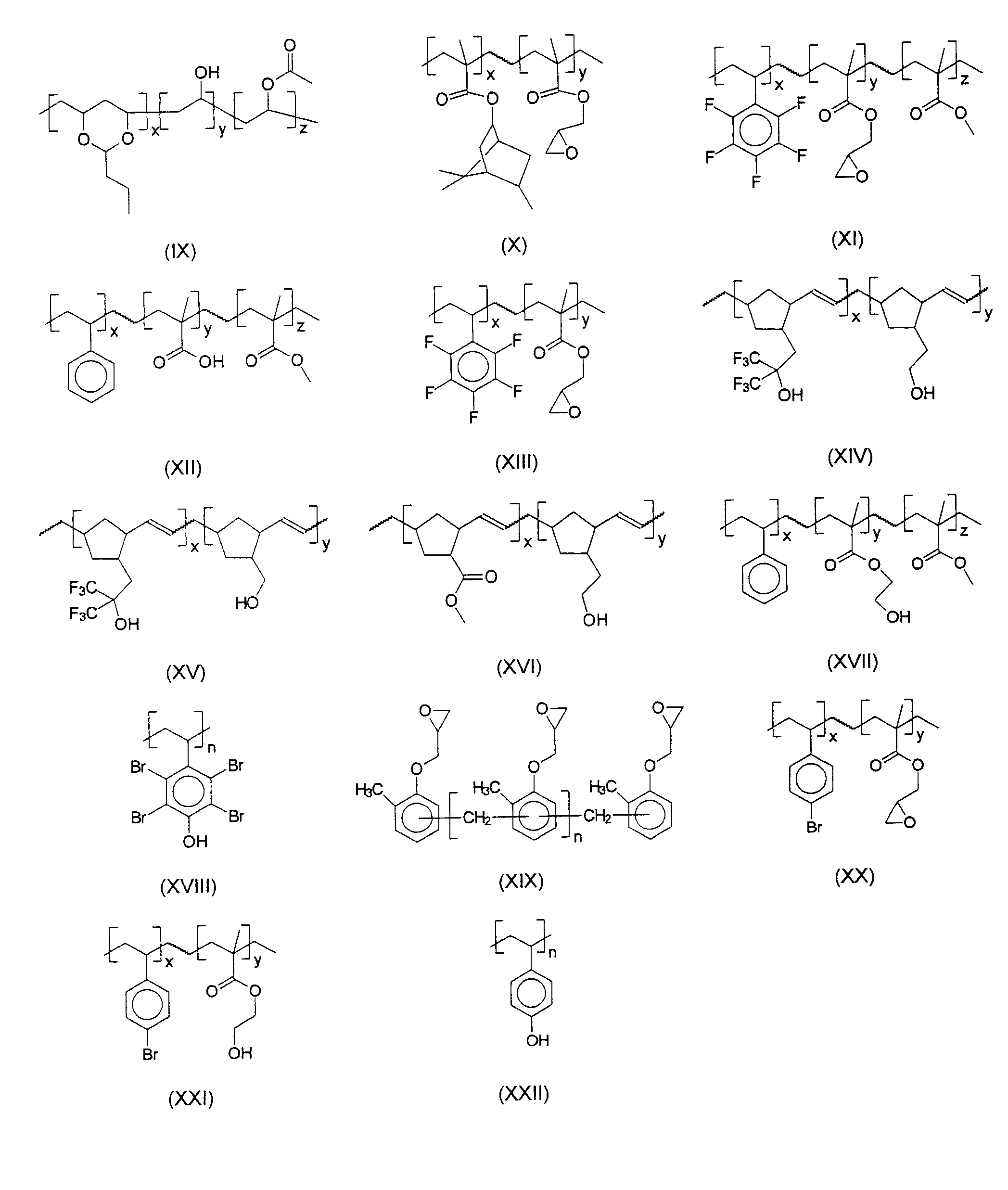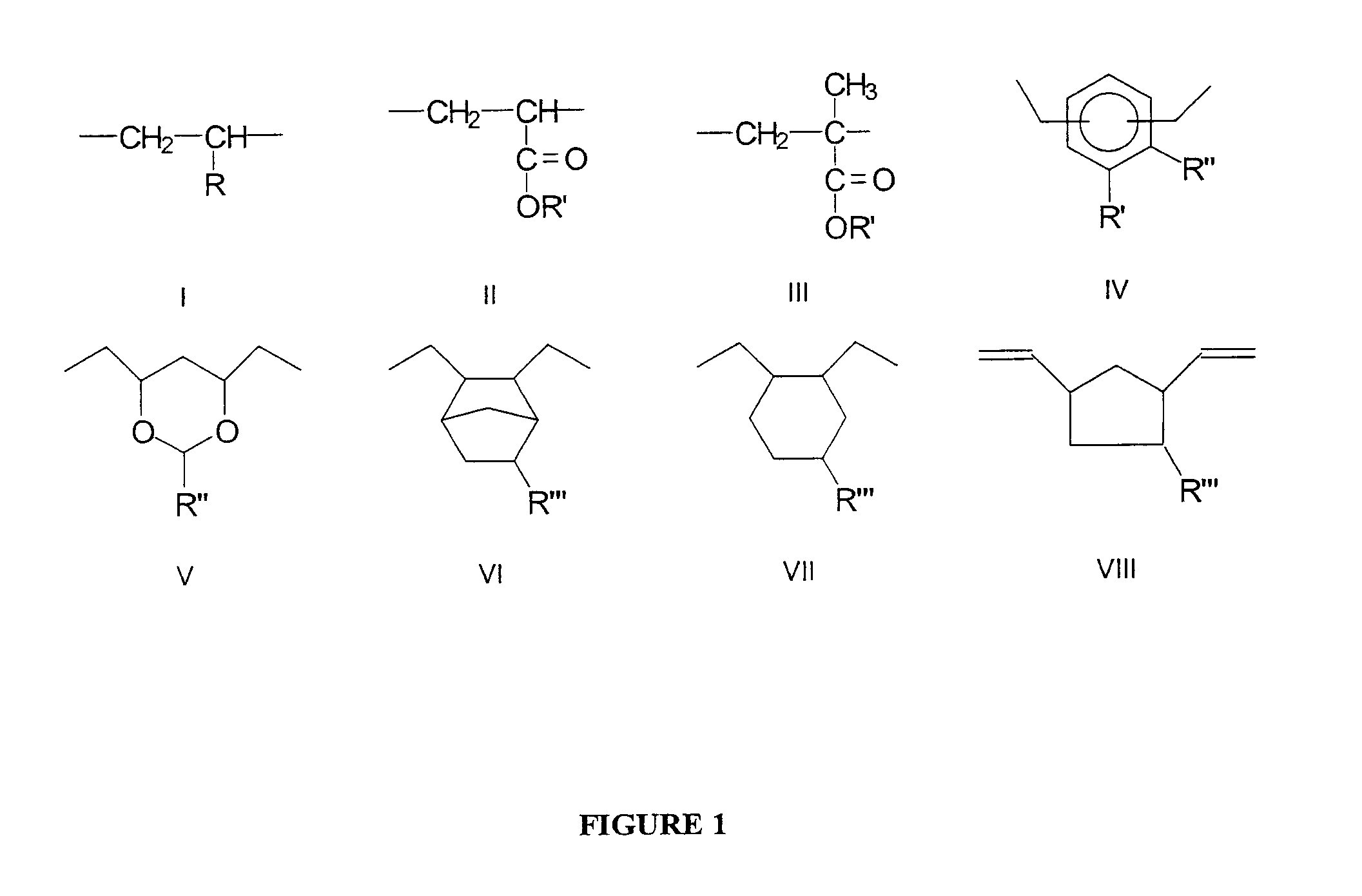Graded Spin-on Organic Antireflective Coating for Photolithography
a technology of organic antireflective coating and spin-casting, which is applied in the direction of photosensitive materials, instruments, photomechanical equipment, etc., can solve the problems of non-uniform photoresist linewidth upon development, deterioration of printed image quality, and variation of linewidth
- Summary
- Abstract
- Description
- Claims
- Application Information
AI Technical Summary
Benefits of technology
Problems solved by technology
Method used
Image
Examples
example 1
[0082]Materials Synthesis (Polymer H)— Grubbs catalyst, 2nd generation (0.02 mmol, 17 mg) is dissolved in tetrahydrofuran THF (10 mL) under nitrogen atmosphere at 60° C. and allyl acetate (1 mmol, 0.1 g) is added followed by a THF solution (5 mL) of the norbornene monomers: 5-norbornene-2-methanol (5 mmol, 0.62 g) and 5-norbornene-2-yl-1,1-bistrifluoromethylethanol (5 mmol, 1.37 g). The reaction mixture is stirred at 60° C. for about 18 hours. Then isobutyl- or ethyl-vinyl ether is added (1 mL) and the reaction is allowed to cool for 30 minutes. Addition of hexane causes the polymer to separate as a thick oil that is decanted and washed with more hexane. Vacuum drying at 50° C. overnight affords the desired polymer product as an off-white crystalline-looking powder. Yield is 60-100%.
[0083]Materials Synthesis (Polymer O, PolyhydroxyStyrene—weight average molecular weight 8000)—A standard procedure reported in the literature (G. Barclay et al., Proceedings of SPIE, Vol. 2724, p. 249, ...
example 2
[0084]Optical and Physical Properties—The optical constants (the index of refraction n and the extinction coefficient k) of individual components suitable for graded BARC applications are measured at a radiation wavelength of 193 nm using a Variable Angle Spectroscopic Ellipsometer (VASE) manufactured by J. A. Woollam, Inc. The optical properties of individual polymer components are shown in FIG. 3:
example 3
[0085]Formulation—Polymer components H and O are dissolved in propylene glycol monomethyl ether acetate (PGMEA) in individual concentrations of 50 parts by weight each (1.8% by weight each with respect to the solvent). One polymer component has an extinction coefficient k higher than 0.5. Another polymer component has an extinction coefficient k lower than 0.5. A crosslinking agent tetramethoxymethyl glycoluril, available from DayChem, in a concentration of 10 parts by weight and di(t-butylphenyl)iodonium perfluorobutylsulfonate (DtBPI—PFBuS) in a concentration of 5 parts by weight are added to the solution, achieving 4.2 wt. % by weight of total solids.
PUM
| Property | Measurement | Unit |
|---|---|---|
| thickness | aaaaa | aaaaa |
| thickness | aaaaa | aaaaa |
| refractive index | aaaaa | aaaaa |
Abstract
Description
Claims
Application Information
 Login to View More
Login to View More - R&D
- Intellectual Property
- Life Sciences
- Materials
- Tech Scout
- Unparalleled Data Quality
- Higher Quality Content
- 60% Fewer Hallucinations
Browse by: Latest US Patents, China's latest patents, Technical Efficacy Thesaurus, Application Domain, Technology Topic, Popular Technical Reports.
© 2025 PatSnap. All rights reserved.Legal|Privacy policy|Modern Slavery Act Transparency Statement|Sitemap|About US| Contact US: help@patsnap.com



